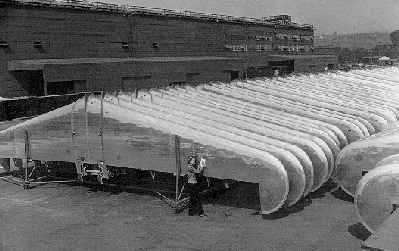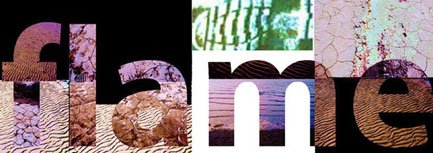
The deep bunkers of Offutt Air Force Base, Nebraska, where Bush fled to on September 11th.
In the Offut Strategic Command
base, near Bellevue Nebraska, a group of Pentagon officials, scientists
from the nuclear weapons laboratories at Los Alamos, Sandia and Livermore,
weapons contractors and spooks met for a week in early August 2003 to plot
the latest developments in the USA's nuclear arsenal.
The meeting at the bunkers
- which inspired the location of the Stanley Kubrick film Dr. Strangelove
- was ironically due to start on the anniversary of the dropping Hiroshima
bomb, and end on that of Nagasaki.
Both the B-52's (Enola Gay
and Bock's Car) which dropped the bombs on Japan - still the only nuclear
strikes in history - were built at the base.


The public have been denied
all access, and demands by Congress to observe the meetings have been refused.
Only a month earlier, Bush
abolished the nuclear oversight committee, which included various academic
and scientists.
Two reports are considered
to provide a guide to future nuclear policy under the Bush Administration.The
first is a report by the National Institute for Public Policy, which was
published in January 2001, and the second which was produced for the Bush
Administration's Nuclear
Posture Review. In May 2003 the US Congress approved the develpment
of a new generation of nuclear weaponry in line with the reports, and it
is believed the Offut meeting is to plan a strategy for development and
production of these weapons.
Both reports suggested that
nuclear weapons could be downsized, and developed for specific purposes,
such as the destruction of chemical weapons stockpiles in situ, or the targetting
of enemy regimes or leaders who are ensconsed in deep bunkers. So-called
mini-nukes with yields of less than five kilotons would lower the threshold
for taking war to another level considerably; and even the threat of their
possible use would encourage smaller states to acquire conventional nuclear
deterrent weapons.
Even more frighteningly for
all of us who would prefer not to see the world reduced to desert is a report
in New Scientist which describes the 'gamma ray bomb', apparently top
of the current Pentagon wish-list. Although not as explosively destructive
as 'ordinary' nuclear weapons, one gram of the material used would contain
more energy than 50kgs of TNT; and although producing relatively little
radioactive fallout, it would cause long-term health problems (much like
depleted uranium) to anyone ingesting the particles. The weapons are being
developed at the Air Force Research Laboratory in New Mexico, and are a
continuation of work originally carried out in 1999 at the University of
Texas producing gamma rays from the decay of the nuclei in radioactive elements.
Concern is now being raised both
by US citizens and international scientists.

U.S. Army Institute of Pathology
photograph - Nagasaki
Museum
The damage in Nagasaki
caused by the flash of heat and blast were aggravated by subsequent
fires. In total, 12,900 houses were completely burned or destroyed and another
5,509 were partially burned or destroyed. The fire also increased the number
of victims. Many people trapped under fallen debris had suffered only external
injuries but died as the fires raged through the city. The gutted ruins
of the Iwakawa-machi neighborhood About 800 meters south of the hypocenter.
The lush roadside trees in this quiet residential neighborhood burned to
ashes. The explosion had completely buried the road in rubble. (Photograph
by Torahiko Ogawa) The devastation near Nagasaki Medical College About 600
meters east-southeast of the hypocenter. Except for a few reinforced-concrete
structures, the buildings to the upper left were completely destroyed and
burned. The building to the lower right is the Nagasaki Medical College
Hospital.




